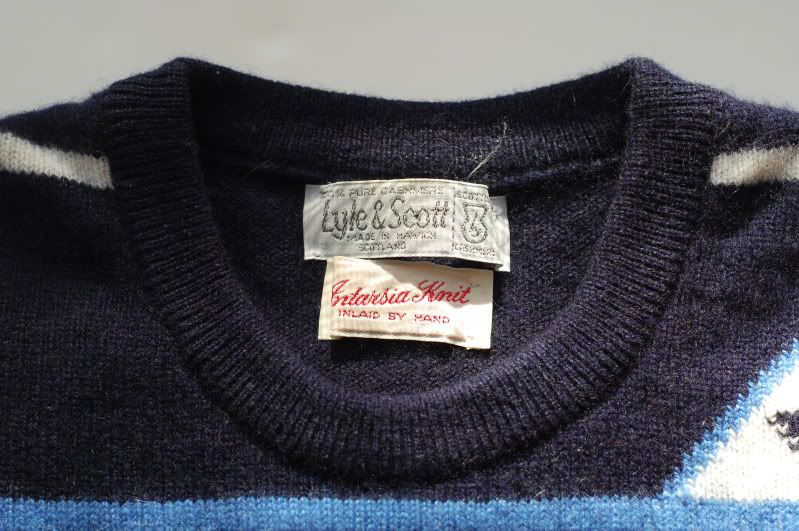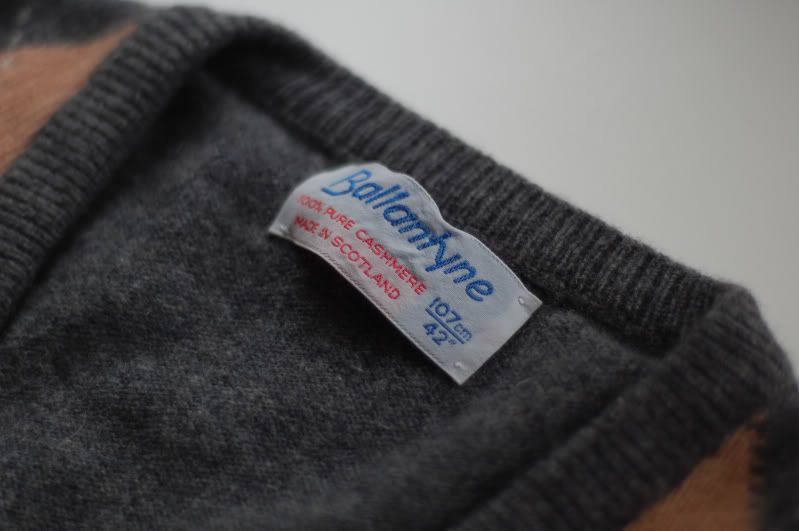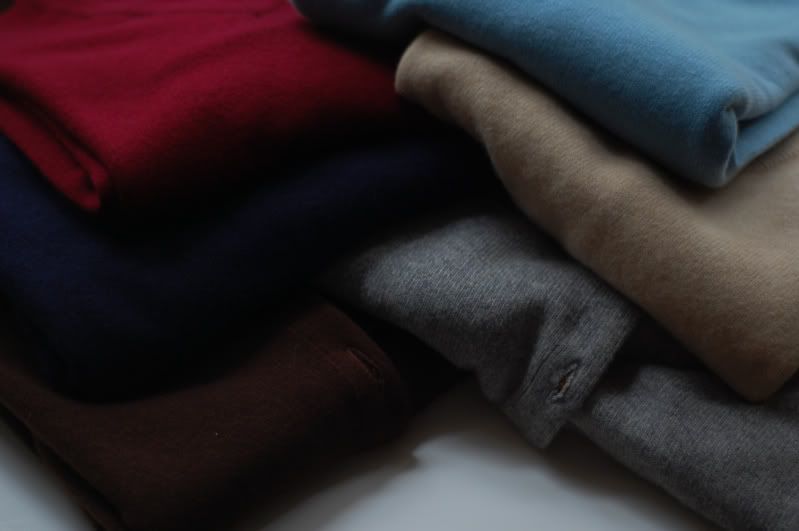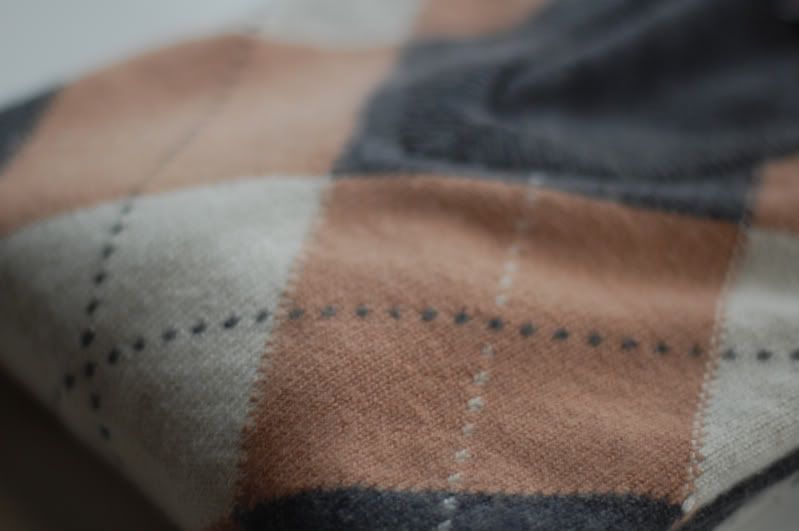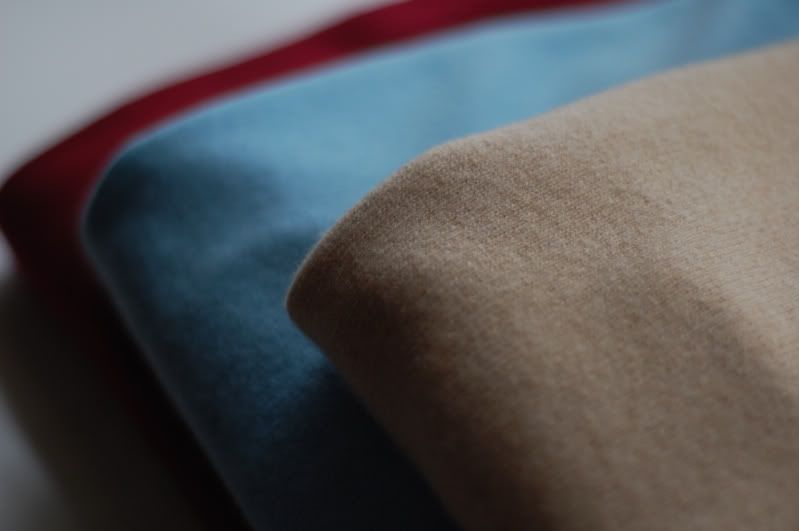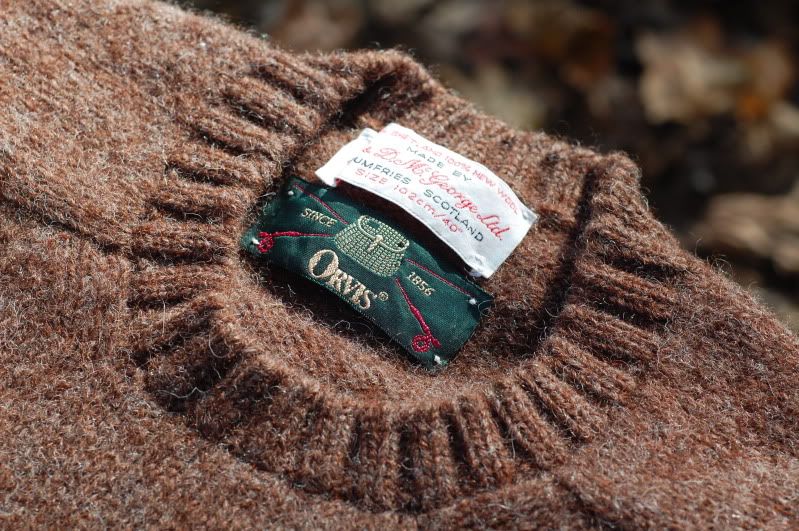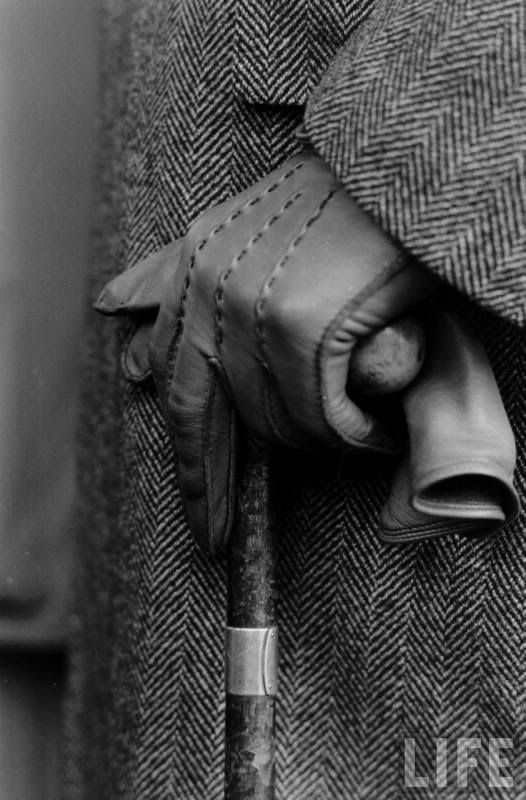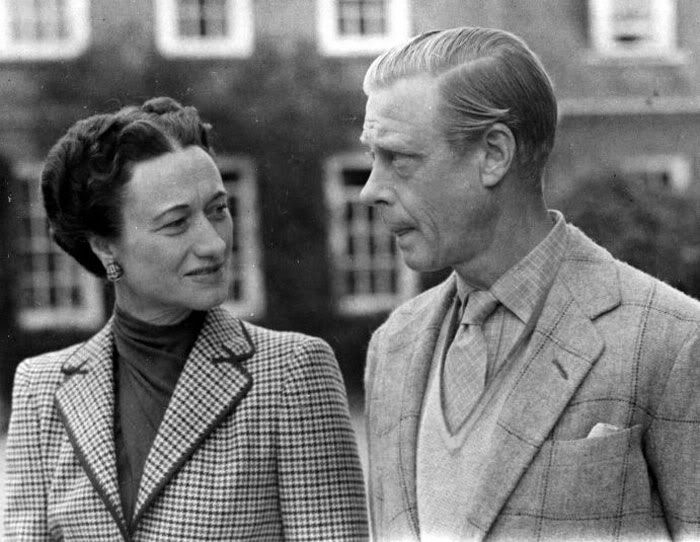
Thursday, December 29, 2011
The Classic V-Neck
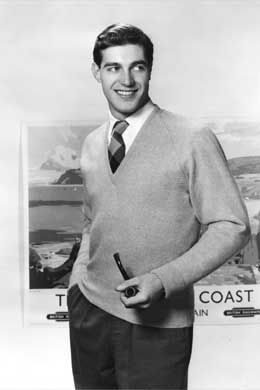
Though largely forgotten today, the deep vee was once an elementary style in men's knitwear that prevailed for several decades in the post-war period. The long yoke not only properly accommodated a tie and shirt collar, but also aesthetically enhanced one's torso by emphasizing shoulder breadth, much like a tailored vest. As the casual revolution swept the United States in the 90s, however, the number of men wearing traditional coat and tie markedly declined, which presaged the demise of the classic v-neck. Moreover, ubiquitous climate control virtually eliminated knitwear's chief practicality in dress clothing: warmth through layering. Consequentially, merchants adapted to consumers' dramatic shift in taste by offering increasingly shallow vees, which did not require collared shirts underneath. Although the deep v-neck has disappeared, its close relative, the cardigan, has made a recent resurgence in youth fashion.
Wednesday, December 28, 2011
Pringle Cardigan
While the content of this blog is primarily devoted to men's knitwear, I would like to take a moment to share a recent acquisition that made a wonderful Christmas gift for my mom - this Pringle cashmere cardigan below. It is styled similarly to Ballantyne's famous Thorley, with a crew neck and gold-tone buttons, but with the addition of beautiful cable-stitching down the front panels. The cashmere has all the hallmarks of the best Scottish product. Beefy and tensely knit with a hand closer to merino wool than what usually passes for cashmere today, it promises, nonetheless, to soften after washing. With proper care, it will last a lifetime and beyond while retaining its shape and becoming ever more luxuriously soft.
This cardigan likely was one of the last garments made for The Scotch House, which shuttered in late 2001, for it bears no Royal Warrant, which Pringle lost one year earlier as a result of its sale to Hong Kong's Fang Brothers.
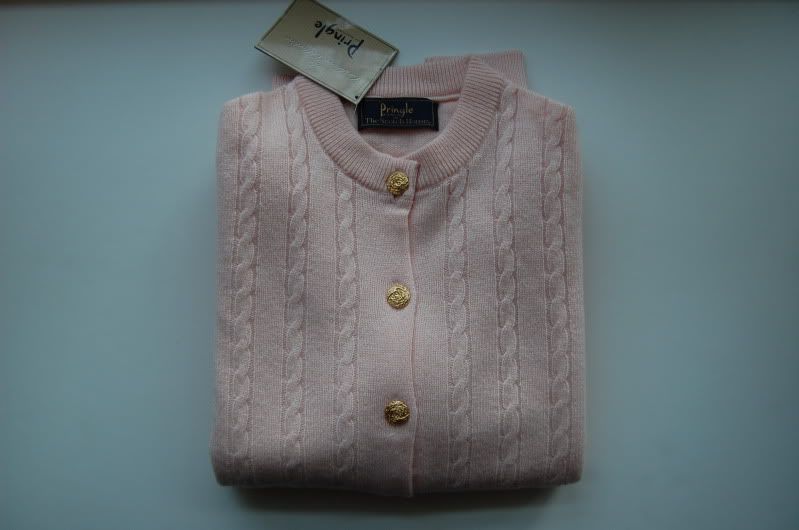
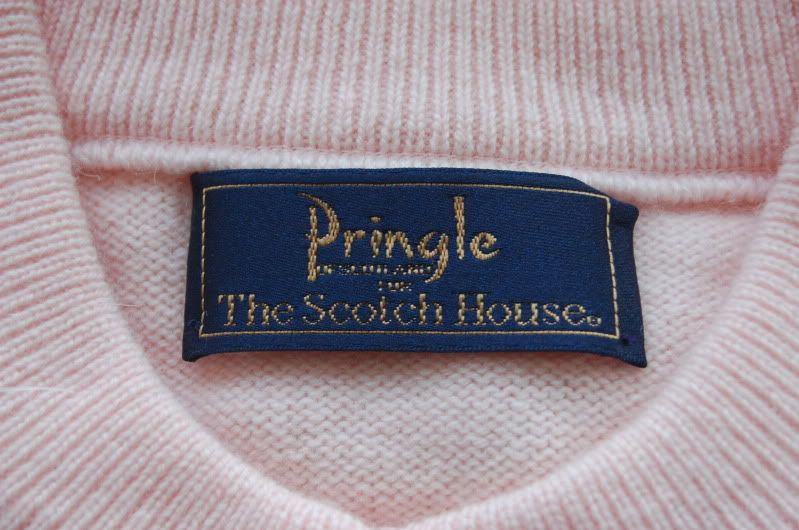

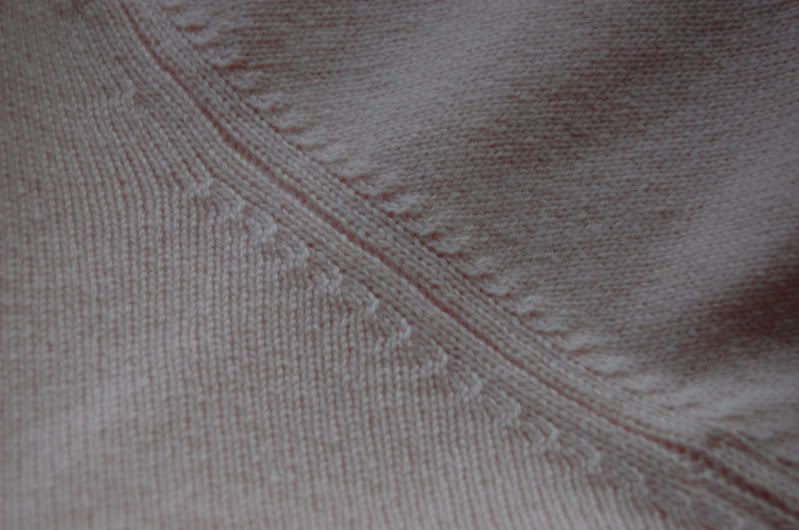
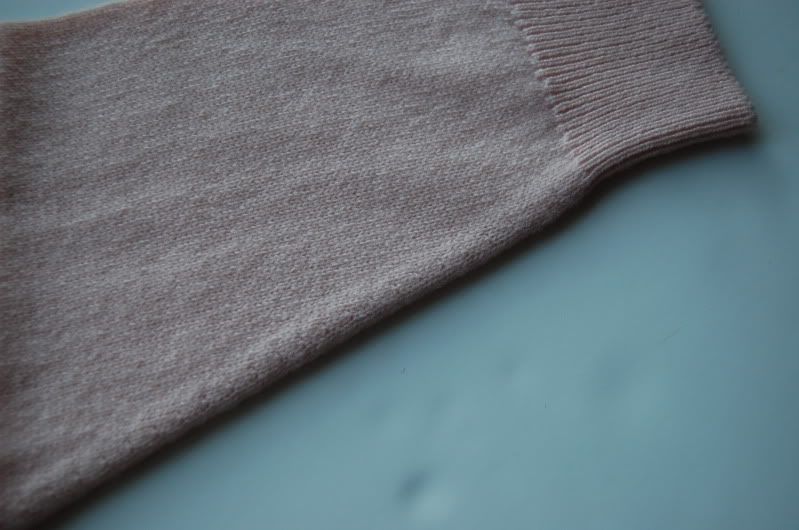
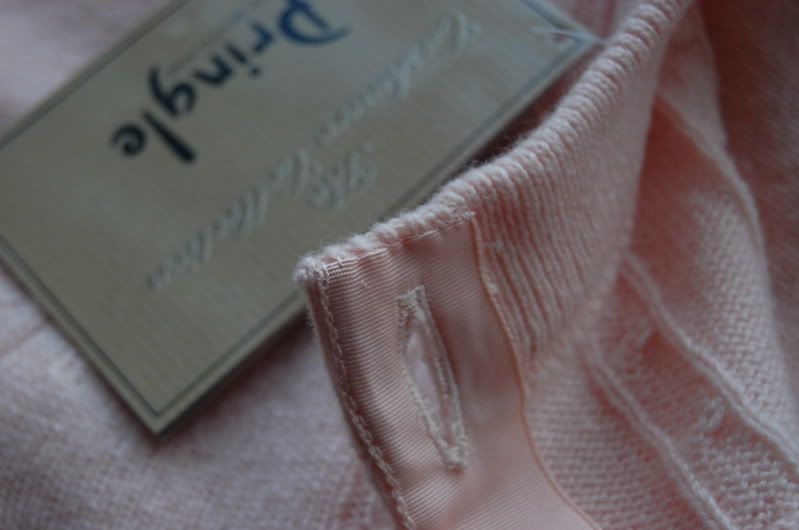
This cardigan likely was one of the last garments made for The Scotch House, which shuttered in late 2001, for it bears no Royal Warrant, which Pringle lost one year earlier as a result of its sale to Hong Kong's Fang Brothers.






William Lockie for A.P.C.
In a boost to the 137-year-old Scottish knitwear manufacturer, William Lockie has teamed up with the French fashion label A.P.C. to produce a collaboration of lambswool cardigans.
Read more about it here on Selectism.
Read more about it here on Selectism.
Tuesday, December 6, 2011
Braemar Intarsia
Like many of Scotland's knitwear factories, Braemar was founded originally as the hosiery manufacturer Innes, Henderson and Co in 1868 in Hawick. As soft cotton eventually displaced scratchy wool in the undergarments trade in the late 19th century, the firm shifted production toward knitted outerwear styles such as the newly innovated pullover sweater. By 1920 Braemar had grown to be Hawick's largest enterprise and pioneered the widespread use of cashmere in knitwear. The Great Depression and Second World War, however, erased much of the company's primacy in the luxury market. The tumultuous post-war period of vacillating ownership presaged Braemar's decline and absorption by the international vertical conglomerate, Dawson International, in 1970. After four years, Dawson merged Braemar with another major Hawick subsidiary, Pringle, and the company ceased to trade within a short time. Decades later when the group struggled to retain its global hegemony, Dawson resurrected Braemar as a fantasy label, wholly owned and produced by its flagship subsidiary, Ballantyne of Innerleithen. After Ballantyne's sale to the investment group, Charme, in 2004, the Braemer name passed into Italian hands. In 2011 the ruins of Braemar's deserted Victoria Works at the bank of the Teviot river were at last demolished under municipal order.
The following video shows a rough overview of the intarsia process at (formerly Ballantyne) Caerlee Mills:
The following video shows a rough overview of the intarsia process at (formerly Ballantyne) Caerlee Mills:
Tuesday, November 29, 2011
Sunday, November 20, 2011
J.J. & H.B. 1788 Cashmere Mills
Caerlee Mills of Innerleithen is revisited in this 2009 promotional clip. Notice the similarities (and differences, too) from the 1981 factory tour by the Brazilian journalist several posts earlier:
Friday, November 18, 2011
A Short History of Ballantyne

Caerlee Mills from the Chapel Street Gate in 1975
Photo: ScotlandPlaces.com
Though Scotland's most celebrated knitwear brand made a modestly late start in 1921, the Ballantyne family, in fact, had played a leading role in country's textile industry for several hundred years prior. The earliest account of the family’s involvement in woolens was recorded in 1666 when David Ballantyne built a mill in Galashiels, then a major spinning and weaving hub. Nearly one and a half centuries later his descendant Henry Ballantyne left the family’s ancestral home and for nine years rented Caerlee Mill*, situated further upstream the river Tweed in Innerleithen. Following a brief return to Galashiels, Henry successfully established his own mill just east of Innerleithen, which he called Tweedvale. Planned housing erected for the mill employees soon emerged as the village of Walkerburn, named after the Walker Burn that flowed into the Tweed at this site. Henry Ballantyne and Sons, as the firm was subsequently known, experienced tremendous success throughout the mid-nineteenth century thanks to explosive growth in demand for Scottish tweeds among Britain’s upper class and, increasingly, overseas in the United States.
After Henry’s death in 1865 his five sons pursued the family's concern with even greater tenacity. The younger three immediately departed Walkerburn to found the Waverley Mills in Innerleithen under their own partnership, Ballantyne Bros. Meanwhile, the elder two continued to manage their father’s mill until 1884 when the senior-most, David, set out to establish his own enterprise, the March Street Mills of Peebles, even further upstream the Tweed. Two years later David purchased Caerlee Mills in Innerleithen from the heirs of its deceased owner, Robert Gill, thus returning his father’s original mill to family hands. After David's death in 1912 his heir, Sir Henry, appropriated his uncles' Waverley Mills under his own control, combining the family's possessions in Peebles and Innerleithen under one name, D. Ballantyne Bros and Co Ltd.

"D. Ballantyne Brothers & Co Ltd
Photographed From An Aeroplane"
Photo: maxwellancestry.com
The first half of the twentieth century brought sweeping change to the fortunes and composition of the Ballantyne family’s holdings. During the Great Depression the business was substantially reorganized: the firm’s carding and spinning operations were centered at the Waverley Mills in Innerleithen while weaving became the devotion of the March Street Mills in Peebles. The knitting division at Caerlee Mills shuttered during the Second World War, but reemerged after as Ballantyne Sportswear Co and moved away from lower-value production to concentrate on exotic luxury fibers, particularly cashmere. The firm had pioneered intarsia knitting since the 1920s, whose designs grew increasingly complex and popular in the post-war period such that Ballantyne became a generic name throughout the world for the style. Ballantyne Sportwear was eventually sold off and traded hands several times in the 1960s before its acquisition by Dawson International, who made it a cornerstone of their vertically integrated, global cashmere empire. As a Dawson subsidiary the firm enjoyed several decades of unchallenged preponderance as the world’s leading manufacturer of cashmere knitwear. Elizabeth II personally visited Caerlee Mills in 1966 and honored the firm three times – in ’67, ‘82 and ’91 – with the Queen’s Award for Industry for export achievement. (Nevertheless, Pringle steadfastly retained her Royal Warrant.)

Elizabeth II Visit to Ballantyne in 1966
Photo: Caerlee Mills Ltd
Meanwhile, the rump D. Ballantyne Bros and Co Ltd merged with Henry Ballantyne and Sons, uniting the Peebles and Walkerburn branches of the family’s operations. This new group, called Scottish Worsteds and Woolens, initiated a spree of takeovers in the Borders until the Dawson conglomerate, in turn, absorbed it in 1981. To distinguish its product from the Ballantyne knitwear division already under Dawson ownership, the weaving mill assumed a new name, Robert Noble, after the founders of two reputable Borders mills it had earlier acquired. In 1995 Dawson sold Robert Noble to Moorhouse and Brook, now the Moorbrook Holdings, which currently possess the mill.
By the close of the twentieth century Dawson International found itself in deep financial straits. The group had grown heavily indebted over its ambitious acquisitions and heavy pension payouts while severe rises in commodity prices and stiffening overseas competition eroded its bottom line. In 2004 Dawson sold Ballantyne Sportswear to Charme, a venture capitalist firm headed by Ferrari-chairman Luca Cordero di Montezemolo. Hampered by continued lackluster performance, Charme spun off the Innerleithen facility in 2008 from the Ballantyne label, presently headquartered in Milan, Italy. The new partnership with Italian textile manufacturer Zegna Baruffa and American retailer Brooks Brothers lasted merely fifteen months when, in January 2010, J.J. & H.B. 1788 Cashmere Mills were placed into receivership. Most of the firm’s assets and employees were liquidated; however, the intarsia unit was preserved and continues to operate in the original, though now substantially deserted premises as Caerlee Mills Ltd. Nonetheless, the future of the facility remains in doubt, for the receivers have sought a buyer or developer for the property without success. In recent months local authorities have entertained the possibility of the mill's demolition.
* At the time Caerlee Mill was called Brodie Mill, after Alexander Brodie who originally founded it in 1788. The mill's later name was adopted from Caerlee Hill, which forms Innerleithen's western geographic boundary. "Caerlee" means approximately "meadow fort" in Gaelic, in recognition of the circular Iron-Age earthworks on the hilltop that once were surrounded by woods.
Wednesday, November 16, 2011
Wednesday, November 9, 2011
Tuesday, November 1, 2011
Monday, October 31, 2011
Berk of Burlington Arcade
Berk Cashmere is situated in the opulent Burlington Arcade, at the nexus of London's up-scale, Mayfair shopping district. Since its opening over one half-century ago, Berk has cultivated a reputation as the city's, and arguably the world's, preeminent retailer of Scottish cashmere. In addition to its magnificent dead-stock collection of Ballantyne, which includes many beautiful hand-framed intarsias, Berk offers knitwear by famed Scottish makers William Lockie and John Laing. Miscellaneous merchandise such as Drakes scarves and customizable Prince Albert slippers further enhance the shop's novelty. The atmosphere is absolutely enchanting and transports one back to a time before high-street fashion sullied cashmere's sublimity and Scotland's primacy was lost to Italy.
For those less interested by knitwear, the Arcade is also home to luxury leather-goods purveyor Pickett, ready-to-wear shoemaker Crockett & Jones, several high-end jewelers, antique dealers and much more. As a living precursor to the great 19th century European arcades and finally all modern-day shopping centers, it behooves any visitor of the British capital to experience this internationally renowned landmark.
Berk Cashmere
46-49 Burlington Arcade
London W1J 0ET
Tel: +44 (0)20 7493 0028
Open M-F: 09.00 - 17.30; S: 09.30 - 17.30
Labels:
Arcade,
Ballantyne,
Berk,
Burlington,
Cashmere,
knitwear,
menswear,
Scotland,
UK
Sunday, October 30, 2011
Ballantyne Cashmere
A Brazilian journalist's visit to the Ballantyne plant at Innerleithen circa 1981:
Tuesday, October 25, 2011
Subscribe to:
Posts (Atom)
